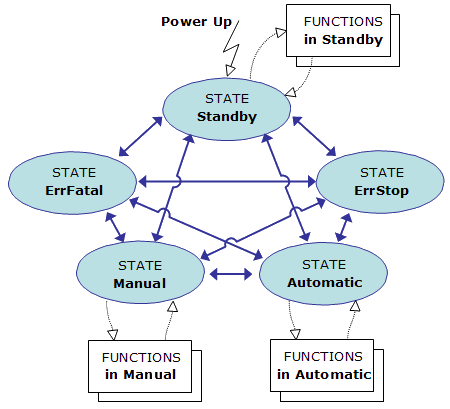State and Function Definitions
A state machine and some functions of general interest are implemented in the software structure. They are provided as examples of how to use the structure but can be adjusted to fulfil specific application usage (see also How to add a new state and How to add a new function).
State transition Diagram
The following state machine has been defined.

Legend
|
|
Represents the current state of one or more modules (e.g. Standby state means that the module is waiting for commands) In addition to the static states, there are two other possible dynamic states:
|
|
State Transition
|
It is the transition from one state to another when performing the corresponding action |
|
|
Any needed machine or single-axis functionality (e.g. single-axis jog), which can be called out of one or several states |
All modules have the same states and state transitions. The state of a module is only influenced by other modules, if they are connected with each other.
State, state transitions and functions descriptions
The structure is built in such a way that state transitions are possible from the active state to any other existing states (except state ErrStop). After leaving state ErrStop (corresponding to a non-fatal error, which causes a stop and power off) the structure automatically recovers the state which was active before entering ErrStop. That means that all characteristics of the previous state are kept.
-
-
Because functionalities are always specific to the application, none are included in the structure itself.









